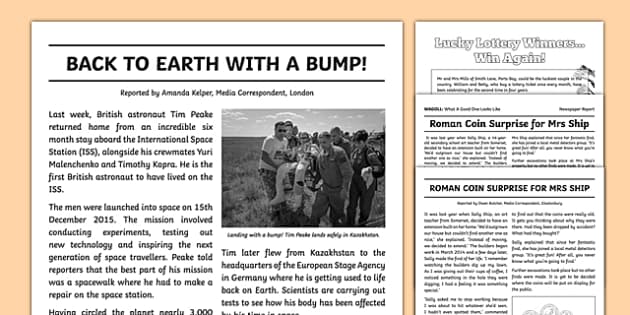The Greatest Guide To News Articles
The Greatest Guide To News Articles
Blog Article
Not known Factual Statements About News Articles
Table of ContentsThe Ultimate Guide To News ArticlesThe Ultimate Guide To News ArticlesMore About News ArticlesThe Basic Principles Of News Articles News Articles for Beginners
Good understanding of various topics provides pupils an one-upmanship over their peers. Although electronic and social media sites are conveniently available, we ought to not fail to remember exactly how important it is to read the newspapers. Parents need to attempt and inculcate the routine of reviewing a paper as a day-to-day routine to continue the tradition of the adored print medium.News tales likewise have at the very least one of the complying with crucial characteristics relative to the intended audience: proximity, importance, timeliness, human interest, curiosity, or consequence.
Within these restrictions, information stories additionally intend to be comprehensive. Amongst the larger and extra respected newspapers, fairness and balance is a major element in presenting details.
Newspapers with a global target market, as an example, often tend to use an extra official style of writing. The specific options made by a news outlet's editor or editorial board are usually collected in a design overview; usual style overviews consist of the and the US Information Design Book. The main objectives of information writing can be summarized by the ABCs of journalism: precision, brevity, and clarity.
News Articles Fundamentals Explained
Generally, reporters will certainly not utilize a lengthy word when a short one will certainly do. They make use of subject-verb-object building and construction and vivid, energetic prose (see Grammar). They supply stories, instances and metaphors, and they hardly ever depend upon generalizations or abstract ideas. News authors attempt to prevent using the same word greater than as soon as in a paragraph (sometimes called an "echo" or "word mirror").
Nevertheless, headings in some cases omit the topic (e.g., "Jumps From Boat, Catches in Wheel") or verb (e.g., "Feline woman fortunate"). A subhead (additionally subhed, sub-headline, subheading, subtitle, deck or dek) can be either a subservient title under the main heading, or the heading of a subsection of the post. It is a heading that comes before the major text, or a group of paragraphs of the main text.

Additional billboards of any of these kinds may appear later on in the post (particularly on succeeding pages) to entice further reading. Such billboards are likewise used as pointers to the post in other areas of the magazine or site, or as promotions for the piece in other magazine or sites. Common structure with title, lead paragraph (summary in bold), various other paragraphs (information) and call information.

Instance of a hard-lead paragraph NASA is suggesting one more room job. The firm's spending plan request, introduced today, included a plan to send out another objective to the Moon. This time around the company really hopes to establish a long-term facility as a jumping-off point for other area journeys. The spending plan requests about $10 billion for the job.
The NASA news came as the firm asked for $10 billion of appropriations for the project. An "off-lead" is the second most crucial front web page news of the day. The off-lead shows up either in the top left edge, or directly browse around here listed below the lead on the. To "hide the lead" is to start the article with history info or information of additional importance to the visitors, forcing them to review even more deeply right into a write-up than they should need to in order to uncover the essential factors.
The 9-Minute Rule for News Articles
Typical usage is that one or two sentences each develop their own paragraph. Reporters generally describe the organization or framework of a news tale as an inverted pyramid. The important and most interesting components of a story are put at the check my source start, with supporting information adhering to in order of decreasing significance.
It allows individuals to check out a subject to just the depth that their interest takes them, and without the imposition of information or subtleties that they could take into consideration unnecessary, but still making that information offered to more interested visitors. The inverted pyramid framework additionally makes it possible for write-ups to be cut to any type of approximate size during format, to suit the area available.
Some writers begin their stories with the "1-2-3 lead", yet there are several kinds of lead offered. A twist can refer to several things: The last story in the information program; a "happy" story to end the program.
Longer write-ups, such as magazine cover articles and the pieces that lead the within sections of a paper, are referred to as. Attribute tales differ from straight information in a number of means. Foremost is the lack of a straight-news lead, many of the moment. Rather of providing the significance of a story in advance, feature writers may try to draw readers in.
How News Articles can Save You Time, Stress, and Money.
The reporter typically details interactions with meeting subjects, making the item extra individual. An attribute's very learn this here now first paragraphs usually relate a fascinating moment or occasion, as in an "unscientific lead". From the particulars of a person or episode, its view rapidly widens to generalizations about the tale's subject. The area that indicates what an attribute has to do with is called the or billboard.

The Editor's Toolbox: A Recommendation Overview for Beginners and Professionals (2001) Allan M. Siegal and William G. Connolly. The New York Times Guidebook of Design and Use: The Official Design Guide Made Use Of by the Writers and Editors of the World's The majority of Reliable Newspaper (2002) M. L. Stein, Susan Paterno, and R.
Report this page